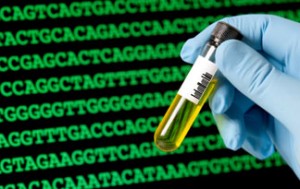As I found out today, more than 250,000 people die of cancer every year in the US. This is a grim statistic, a statistic which doubtlessly inspired countless people to engage in the battle with tis frequently fatal disease. Progressive research in the area of nanotechnology as it relates to targeted medicinal delivery is quickly unraveling and hopefully will become available for abundant use for any patient afflicted with previously ineffectively treated illnesses such as cancer.
I believe that such a method for combating disease will also ensure breakthroughs in gene therapy- curing genetic disorders that at the present time can rarely be treated, and never cured. For example, a person that is suffering from Sickle Cell Anemia has a single point mutation in his DNA that is causing the hemoglobin in his red blood cells to fold into an inappropriate shape that prevents the red blood cell from carrying out its function. This one mutation can cause a lifetime of agony; an inability to lead a life of a normal healthy individual. Using nanotechnology this problem could potentially be fixed- what if nanoparticles that carry the necessary RNA or DNA are injected in to the bone marrow and the encoded information enters the marrow cells ( similarly to the movement of viral DNA into cells) causing the correct ‘instructions’ to be read, resulting in the manufacture of some healthy red blood cells. Of course, the condition would not be alleviated to the full extent but the patient who has the sickle cell disease ( a recessive genotype) will exhibit the symptoms more similar to the patient with the sickle cell trait ( heterozygous genotype) and will bemore or less symptom free.
Nanotechnology has already been of great benefit for many patients suffering with genetic illnesses including sickle cell anemia by creating simpler diagnostic techniques that would benefit patients, especially in underdeveloped countries- this was clearly demonstrated to us through our lab visits where we got to view the LUCAS device- a cheaper and more accessible diagnostic tool. Other ideas that may assist in the prevention, diagnosis, and cure of genetic disorders by proofreading DNA in early stages of development and being able to ‘cut and paste’ sections of DNA effectively. In the near future genetic disease ay be no more.
http://www.physorg.com/news131291839.html
http://www.nanotechnologist.com/genenano/index.html
http://nanotechnologytoday.blogspot.com/2007/03/dna-nanoparticles-in-gene-therapy-for.html